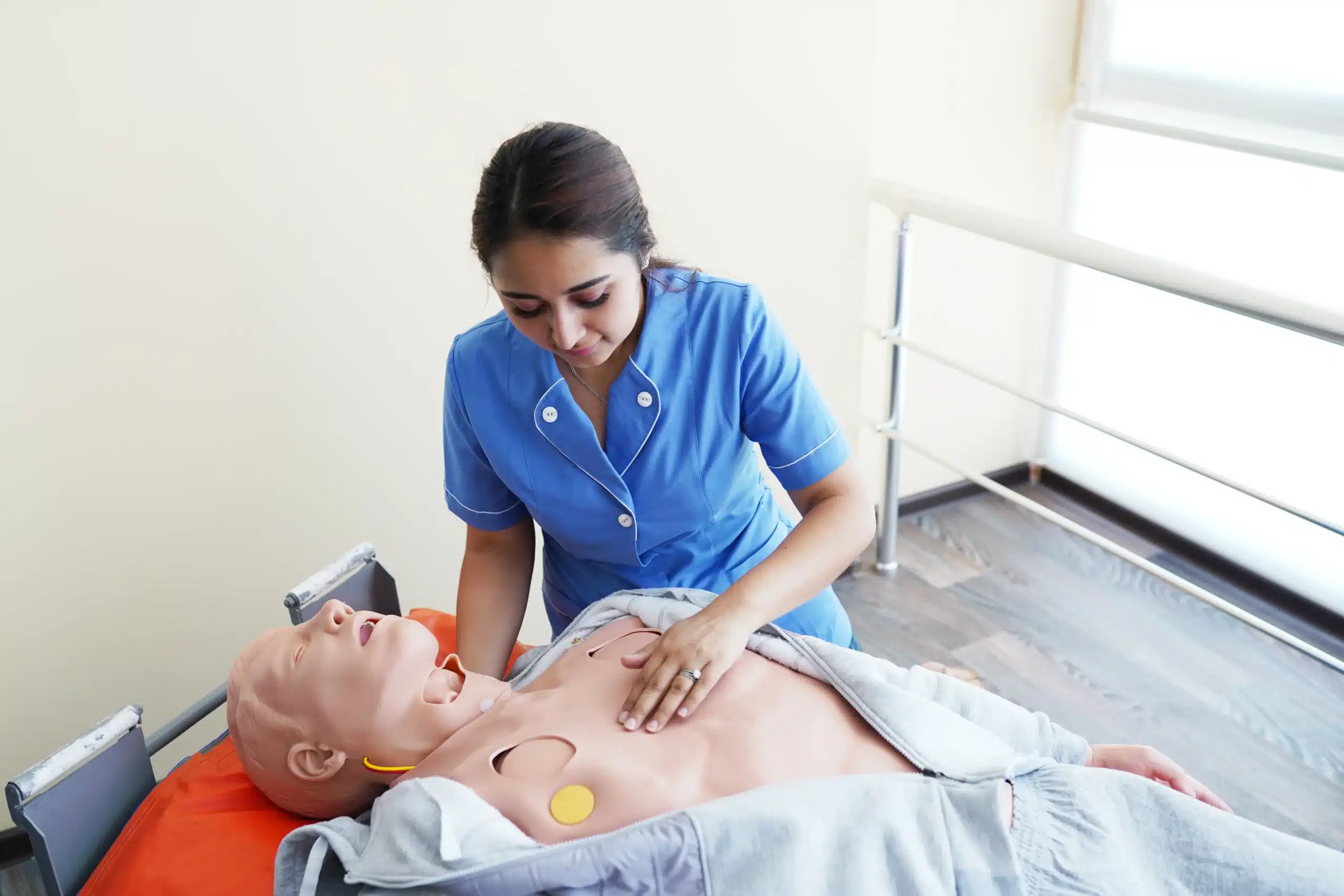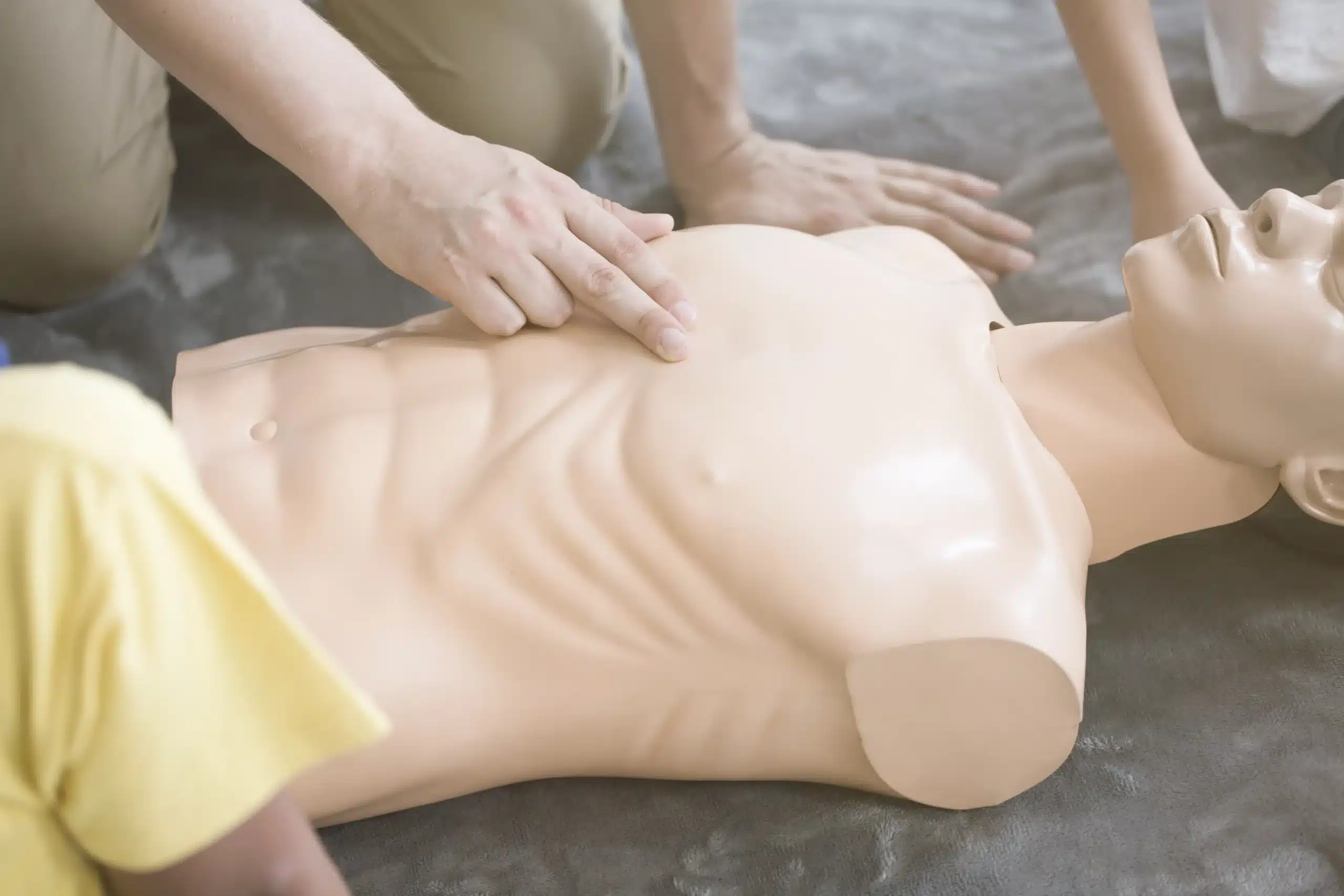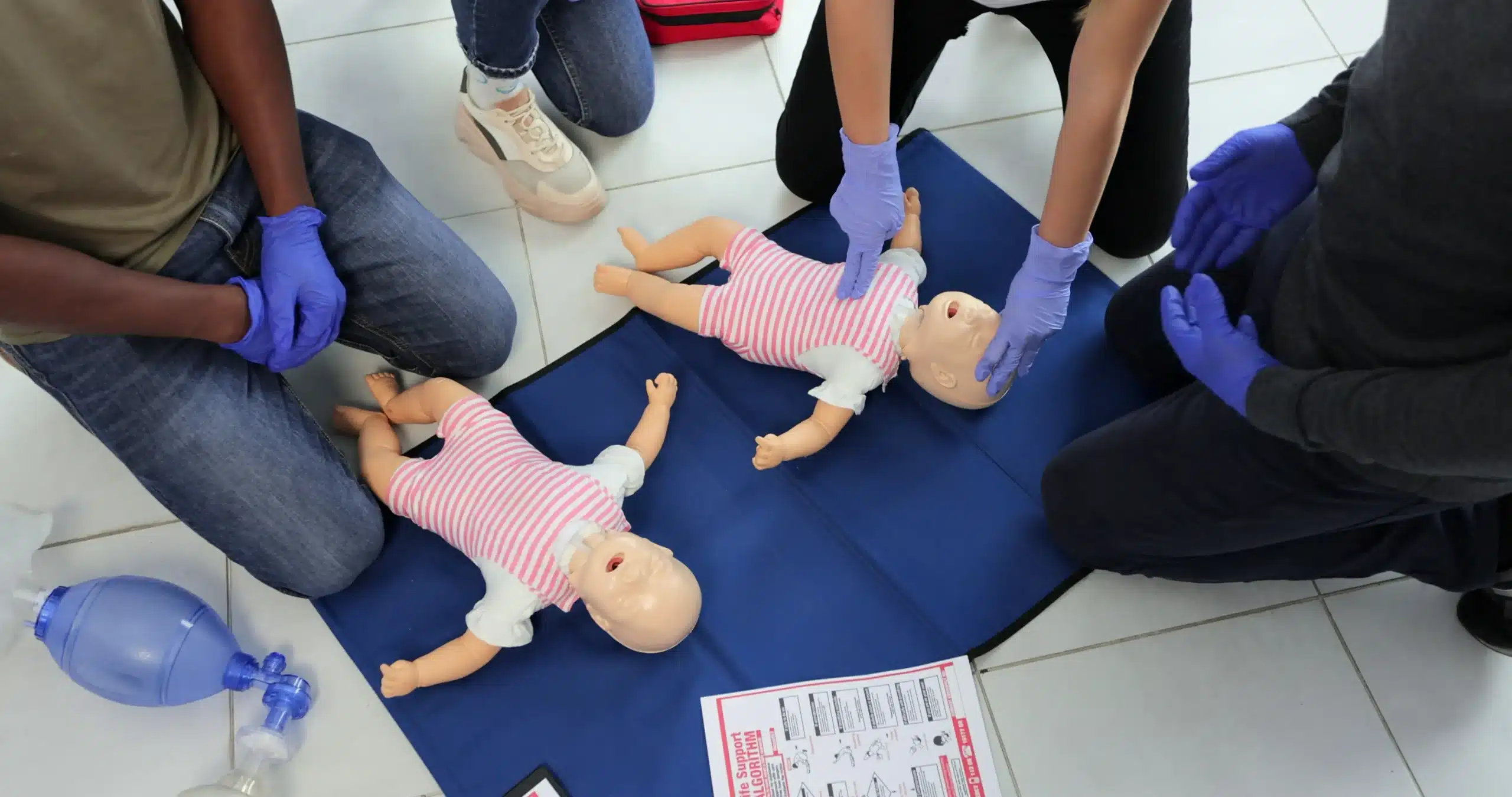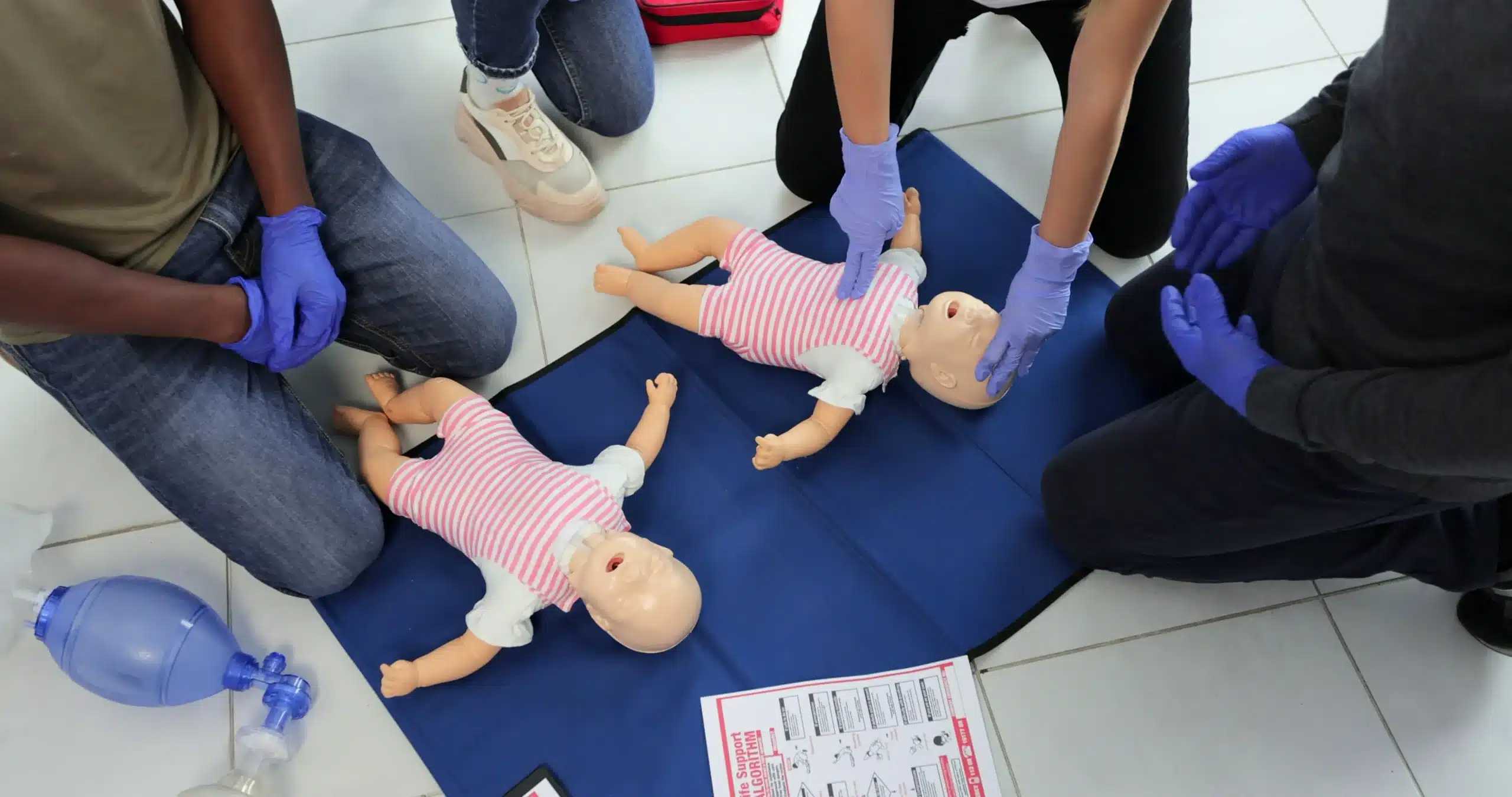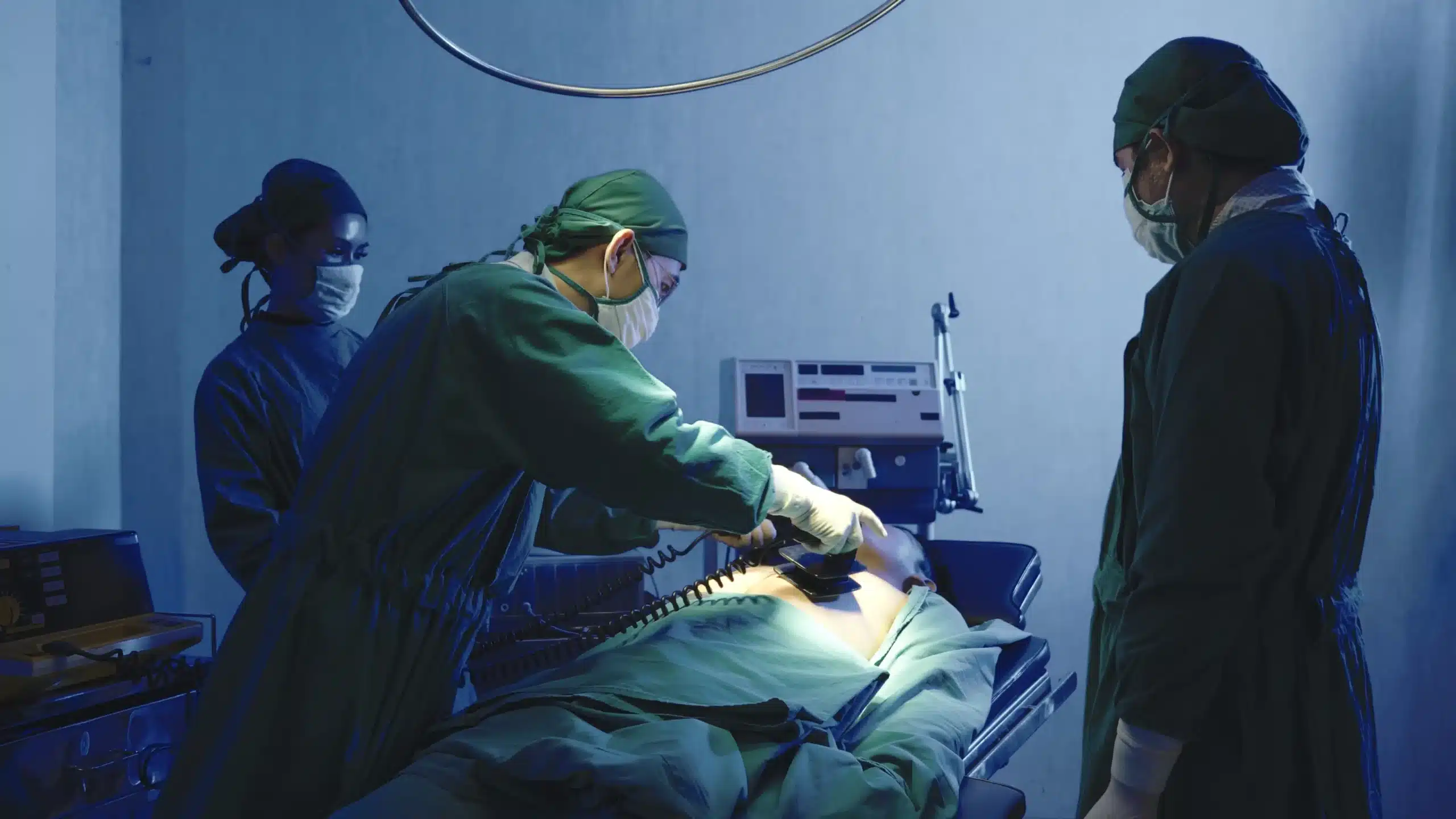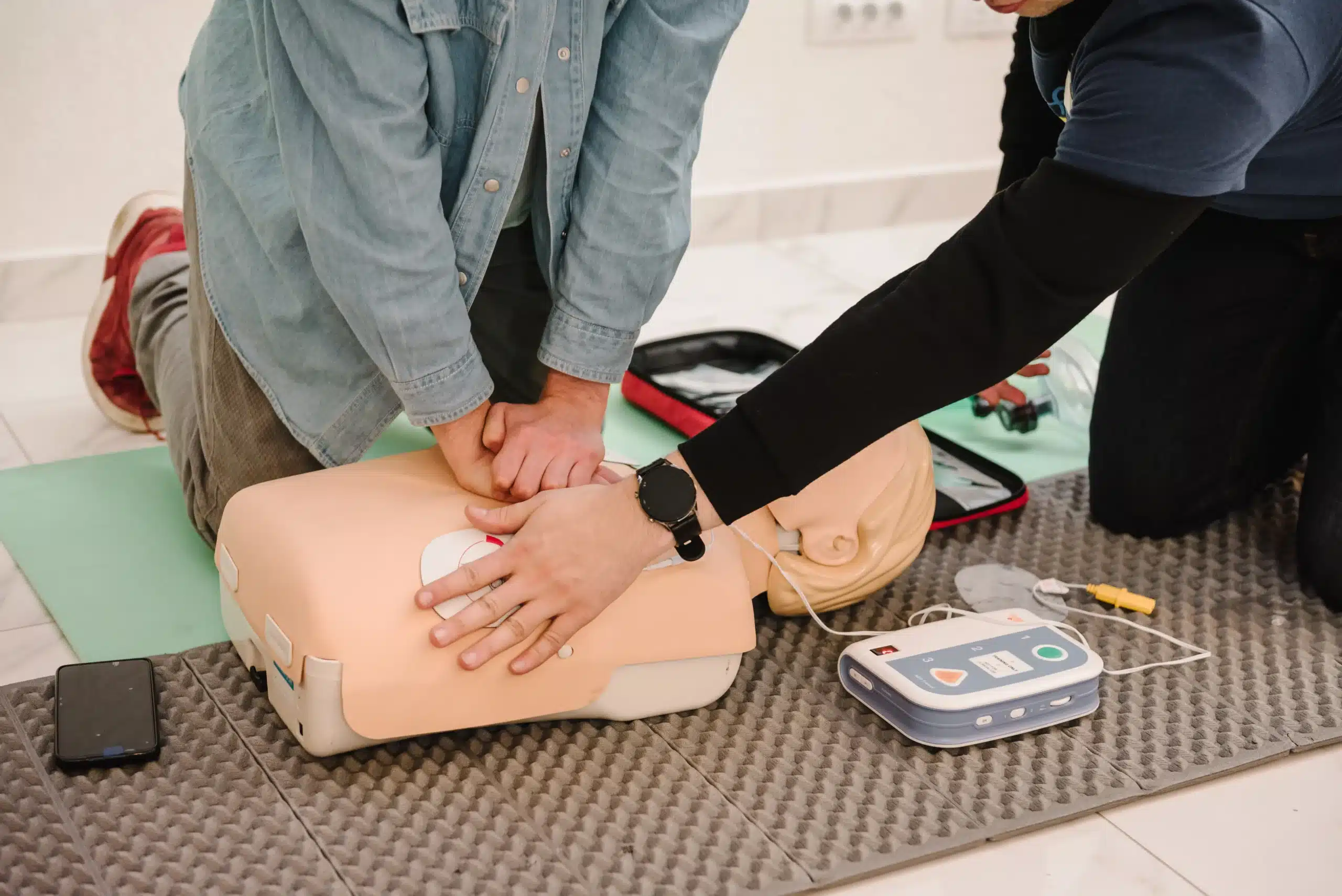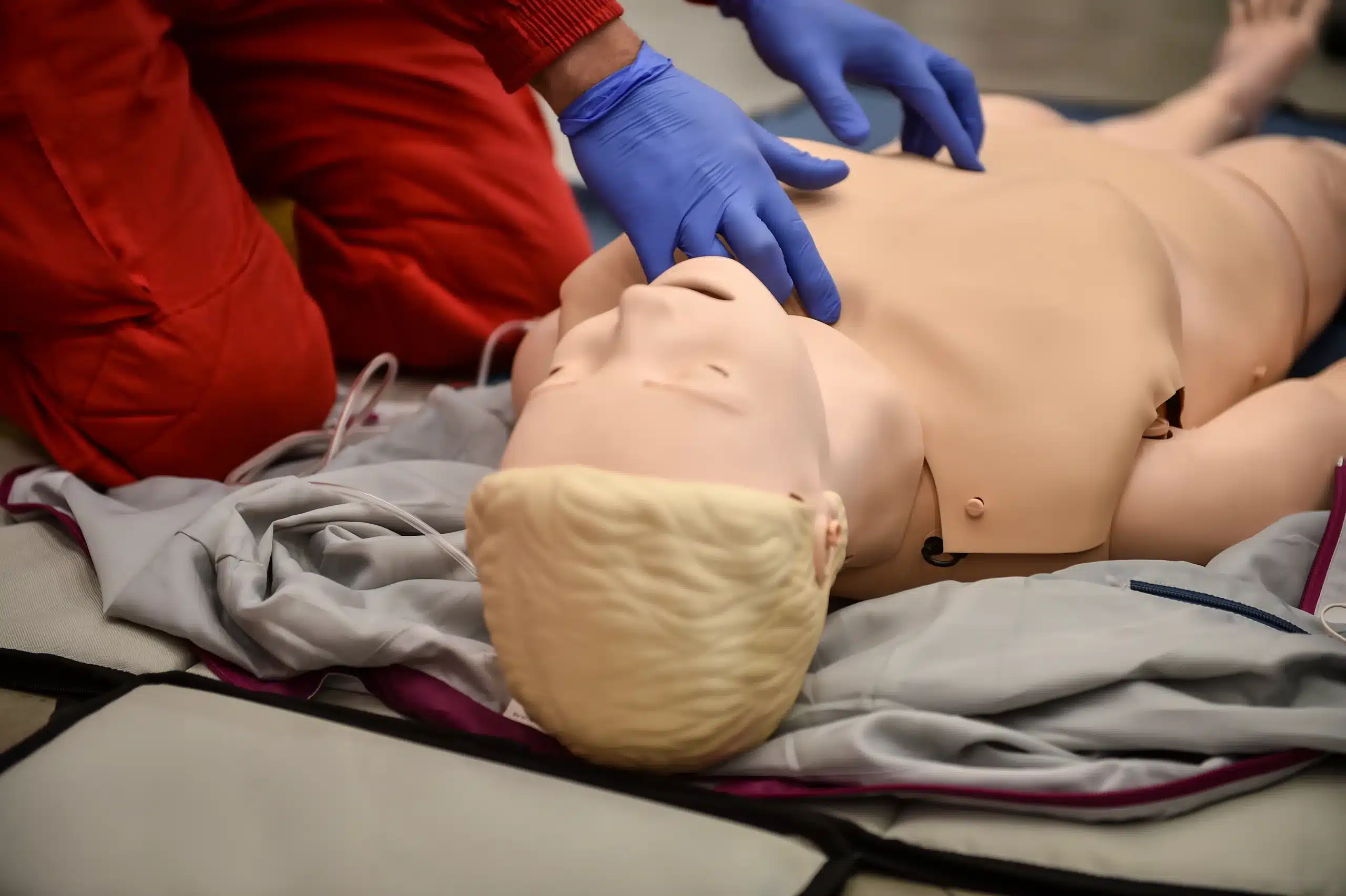Empowering yourself with lifesaving skills starts with CPR certification. This guide breaks down the essentials of CPR training, from understanding its significance and the different types of courses available to finding the perfect class in Alameda or nearby Berkeley. Whether you’re a healthcare provider seeking BLS certification or a community member wanting to learn CPR for adults, children, and infants, we’ll cover it all. We’ll also discuss how to find cpr certification in Berkeley and explore cost-saving options, making this essential training accessible to everyone.
Key Takeaways
- CPR certification empowers you to act: It’s a valuable skill for personal preparedness and often a workplace requirement. Find a course that covers CPR for adults, children, and infants.
- Select the right training level: Consider your career goals and choose a course—basic CPR/First Aid or advanced certifications like BLS, ACLS, PALS—that meets your specific needs.
- Affordable training is available: Explore options like group discounts and compare prices from various providers to find a course that fits your budget. Safety Training Seminars offers competitive pricing and convenient scheduling.
What is CPR Certification & Why Do You Need It?
CPR certification equips you with the skills to respond effectively during medical emergencies. It’s a valuable credential for both personal and professional reasons, empowering you to assist family, friends, colleagues, or even strangers when needed. This section explores what CPR certification entails and why it’s so important.
What is CPR & How Does it Save Lives?
CPR (Cardiopulmonary Resuscitation) is a lifesaving technique used when someone’s heartbeat or breathing has stopped. This can happen due to a heart attack, drowning, or other medical crises. CPR involves chest compressions and, sometimes, rescue breaths. These actions maintain blood flow to the brain and other vital organs until professional medical help arrives. Learning and practicing CPR can give you the confidence to act quickly and potentially save a life. The importance of CPR training is underscored by the hundreds of thousands of cardiac arrests that occur each year in the U.S.
Legal Requirements & Career Benefits
Beyond the personal satisfaction of knowing how to perform CPR, certification can be a job requirement. Many employers, particularly in healthcare, childcare, and education, require CPR certification. Holding a current CPR certification demonstrates your commitment to safety and preparedness, making you a more competitive candidate. These certifications are typically valid for two years. Staying current with the latest guidelines from organizations like the American Heart Association ensures you can provide effective assistance when it matters most.
Best CPR Classes in Alameda
Finding the right CPR class can feel overwhelming with so many options. Don’t worry, we’ll break down what to look for and highlight some key features of quality CPR training in Alameda. Whether you’re a healthcare professional needing BLS certification or a parent wanting to learn CPR for infants, there’s a course out there for you.
Basic Life Support (BLS)
BLS certification is a must-have for healthcare providers and those in related fields. A high-quality BLS course covers essential life-saving skills for adults, children, and infants, including CPR, AED use, and relief of choking. Look for classes that follow the latest American Heart Association (AHA) guidelines, like those offered at Safety Training Seminars (BLS courses). These courses provide the in-depth training and hands-on practice necessary to confidently respond to cardiac arrest and other emergencies.
CPR/AED for Adults, Children, and Infants
For those outside of healthcare, a general CPR/AED course for adults, children, and infants is a great option. These courses empower you to respond effectively to emergencies at home, work, or in your community. Learning CPR and First Aid often includes AED training, teaching you how to use this life-saving device. Make sure the course you choose covers CPR techniques for all ages, as the methods differ slightly for infants, children, and adults. Knowing how to perform CPR on everyone from infants to adults can make you an invaluable asset in any emergency.
First Aid + CPR
Combining First Aid and CPR training into one course provides comprehensive preparedness for various emergencies. You’ll learn how to respond to everything from minor cuts and burns to life-threatening situations like heart attacks and choking. Safety Training Seminars offers combined CPR and first-aid classes, making it convenient to gain these essential skills. This combined approach ensures you’re equipped to handle a broader range of situations and provide immediate assistance until professional help arrives.
Where to Get Certified in Alameda
Finding the right CPR certification course that fits your schedule, budget, and learning style is essential. Here are a few options for CPR certification in Alameda County:
Safety Training Seminars
Safety Training Seminars offers a range of American Heart Association courses, including BLS, ACLS, and PALS, right here in Alameda. They also provide EMSA Child Care Health & Safety training and offer discounts for group classes. Their commitment to low prices and same-day certification cards makes them a convenient and affordable choice. If you’re looking for CPR classes in nearby Berkeley, they offer courses there as well.
American Red Cross
The American Red Cross also provides CPR classes and certification in Berkeley. With options for in-person, online, or blended learning, you can choose the format that works best for you. Their in-person classes offer hands-on training and result in a two-year certification that meets OSHA requirements.
Other CPR Training Providers in Alameda County
Several other organizations offer CPR training in the area. For example, Berkeley CPR Classes provides American Heart Association-certified CPR, BLS, ACLS, PALS, and First Aid courses throughout Northern California. With numerous locations and a streamlined registration process, they offer flexibility and convenience. Reviews and testimonials suggest they also have a low price guarantee for Alameda County residents.
How Much Does CPR Certification Cost?
CPR certification costs vary depending on the level of training you need and where you take the course. Several factors influence the final price, so it’s smart to understand these before you register.
Pricing & Fees
Generally, basic CPR and First Aid certification combined will be less expensive than advanced certifications like ACLS (Advanced Cardiovascular Life Support) or PALS (Pediatric Advanced Life Support). Safety Training Seminars offers a low price guarantee for Alameda County, so check their website for current pricing on CPR, First Aid, and other life-saving courses. Keep an eye out for potential additional costs, such as study materials or online learning platforms, which might not be included in the advertised course fee.
Class Length & Time Commitment
The time commitment for CPR certification depends on the course type. Basic CPR/AED and First Aid courses typically take a few hours, while more specialized courses like BLS, ACLS, and PALS require a longer commitment. Safety Training Seminars offers a range of courses to fit your schedule, with options for weekday, evening, and weekend classes. You can find more information about their course schedules on their website. Factor in travel time to and from the training location when considering your overall time commitment.
How Long is Certification Valid & How Do You Renew?
Most CPR certifications, including those from the American Heart Association and the American Red Cross, are valid for two years. To maintain your skills and ensure you’re prepared for emergencies, renewing your certification before it expires is essential. Renewal courses are often shorter than initial certification courses, focusing on refreshing your knowledge and skills. Check with your certifying organization or training provider, like Safety Training Seminars, for specific renewal requirements. They can guide you through the renewal process and help you maintain your qualifications.
What Happens in a CPR Class?
CPR classes give you the skills and confidence to act fast in a medical emergency. Here’s what you can expect during your training:
Classroom Learning
CPR training starts with the basics. Instructors explain how to recognize cardiac arrest, the importance of maintaining blood flow, and the steps to take in an emergency. You’ll also learn how to safely use an AED. This classroom instruction builds a foundation for the hands-on practice to come. For a closer look at what this entails, you can explore the CPR and First Aid class details offered in nearby Berkeley.
Hands-on Practice & Feedback
The core of CPR training is hands-on practice. Using mannequins, you’ll practice chest compressions, rescue breaths, and proper hand placement. Instructors will give you personalized feedback to improve your technique and boost your confidence. Many classes use scenario-based training to simulate real emergencies, giving you a chance to apply what you’ve learned. Experts emphasize that hands-on practice, realistic scenarios, and quality feedback are essential for effective CPR training.
Testing & Certification
After the training modules, you’ll demonstrate your skills with a written exam and a practical test. Once you pass, you’ll receive your American Heart Association certification card, good for two years. This certification shows you’re prepared to respond effectively in a medical emergency.
Save Money: Discounts & Group Rates
CPR certification is a valuable investment, and there are ways to make it more affordable. Keep an eye out for these opportunities to save on your training.
Group Discounts & Promotions
If you’re coordinating training for a group, such as your workplace, school, or community organization, inquire about group discounts. Many providers offer reduced rates for group bookings, making it more cost-effective to certify multiple people at once. This can be a great way to boost workplace safety and preparedness. Safety Training Seminars, for example, has information available about their group discounts.
Student & Member Discounts
Students and members of specific organizations might be eligible for discounted CPR certification. Check with your school, professional association, or other membership groups to see if they offer reduced rates or have partnerships with training providers. Sometimes, even community centers or recreational facilities offer lower prices for members. These discounts can make CPR training more accessible. UC Berkeley’s Recreation & Wellbeing program, for instance, offers discounted health and safety courses for students and members.
Seasonal Deals
Look for seasonal promotions and discounts offered by various training providers. Some organizations, like the American Red Cross, occasionally run special offers on their CPR and first aid classes. Checking their websites or subscribing to their newsletters can alert you to potential savings. These deals can be a smart way to manage costs, especially if your certification isn’t urgent and you have some flexibility with your training schedule.
Find the Right CPR Class for You
So, you’re ready to get CPR certified—fantastic! But with different courses, providers, and certifications available, choosing the right class can feel a little overwhelming. This section breaks down how to find the perfect fit for your specific needs.
Compare CPR Courses
First things first: understand the different types of CPR courses available. Basic CPR and First Aid classes are great for the general public and cover essential lifesaving skills. If you work in healthcare or plan to, you’ll likely need a more advanced certification like Basic Life Support (BLS), Advanced Cardiovascular Life Support (ACLS), or Pediatric Advanced Life Support (PALS). These courses cover medical emergencies in greater depth and are usually required for specific professional licenses. Safety Training Seminars offers a range of American Heart Association (AHA) certified courses, including BLS, ACLS, and PALS, so you can find the right level for you.
Check Reviews & Testimonials
Before committing to a class, do a little research on the training provider. Look for reviews and testimonials from past students to get a feel for the quality of instruction and the overall learning experience. Real feedback can give you valuable insights into the instructors, the course materials, and the class atmosphere.
Match Certification to Your Needs
Think about why you’re getting certified. Are you fulfilling a job requirement, preparing for a specific situation, or simply wanting to be prepared? Matching the certification to your needs ensures you get the right training. For example, healthcare providers often require BLS certification, while a childcare provider might prioritize a course that emphasizes infant and child CPR. Consider your current and future goals when making your decision. If you’re unsure which certification is right for you, reach out to potential providers like Safety Training Seminars. They can help guide you toward the best option.
Related Articles
- How CPR Certification Prepares You for Emergencies – Alameda CPR Classes
- Top 10 Reasons to Get CPR Certified – Alameda CPR Classes
- CPR Certification in Alameda: Why Everyone Needs It – Alameda CPR Classes
- Learn CPR & Save a Life: Benefits of CPR Training – Alameda CPR Classes
- CPR Certification: How to Be a Workplace Hero – Alameda CPR Classes
Frequently Asked Questions
How do I choose between CPR and First Aid training?
It depends on your goals. If you want basic lifesaving skills for emergencies like choking or cardiac arrest, CPR training is a great start. First Aid training teaches you how to manage injuries like cuts, burns, and sprains. A combined CPR/First Aid course offers the most comprehensive preparedness for various situations.
What’s the difference between BLS and CPR certification?
CPR is a lifesaving technique within BLS (Basic Life Support). BLS certification is more comprehensive, covering CPR, AED use, and other essential skills for healthcare providers and professionals in related fields. While anyone can learn CPR, BLS certification is specifically designed for those in healthcare settings.
How often do I need to renew my CPR certification?
Most CPR certifications are valid for two years. Renewing your certification ensures your skills are up-to-date with the latest guidelines, keeping you prepared for emergencies.
What if I’m nervous about performing CPR in a real emergency?
It’s completely normal to feel apprehensive. High-quality CPR classes emphasize hands-on practice and realistic scenarios to build your confidence. Instructors provide feedback and guidance, helping you feel prepared to act quickly and effectively under pressure.
Are online CPR certifications accepted?
While online CPR courses offer flexibility, many organizations and employers prefer certifications that include in-person skills practice and evaluation. Check with your employer or the organization requiring certification to ensure an online-only course meets their requirements. Blended learning options, combining online learning with in-person skills sessions, are often a good compromise.


